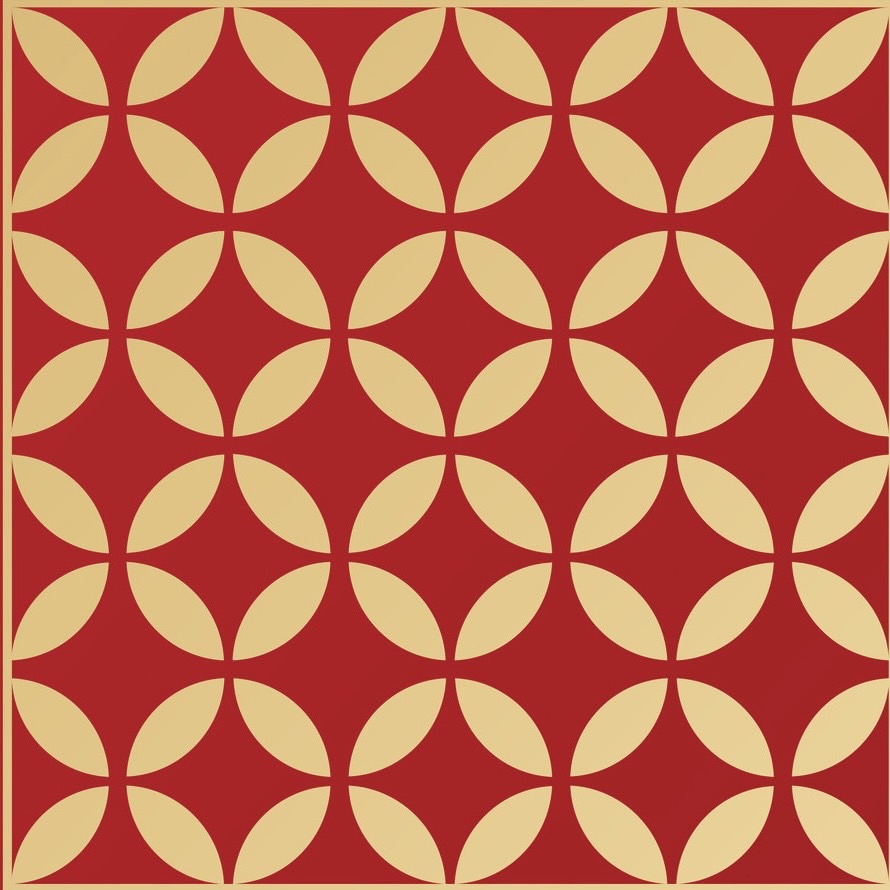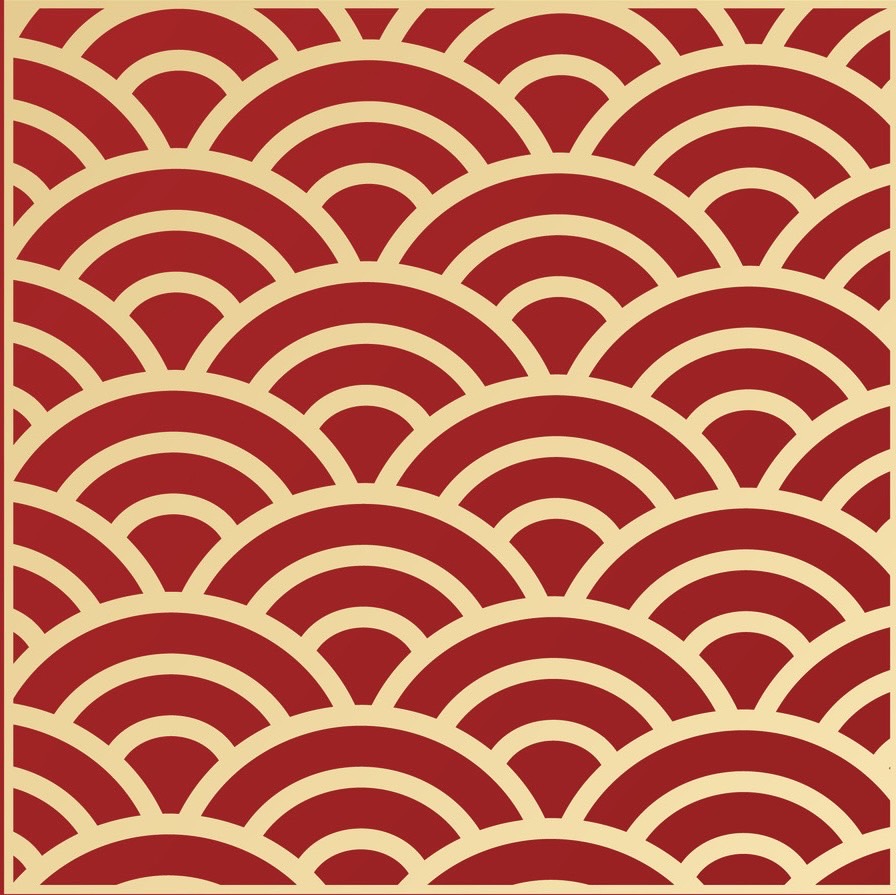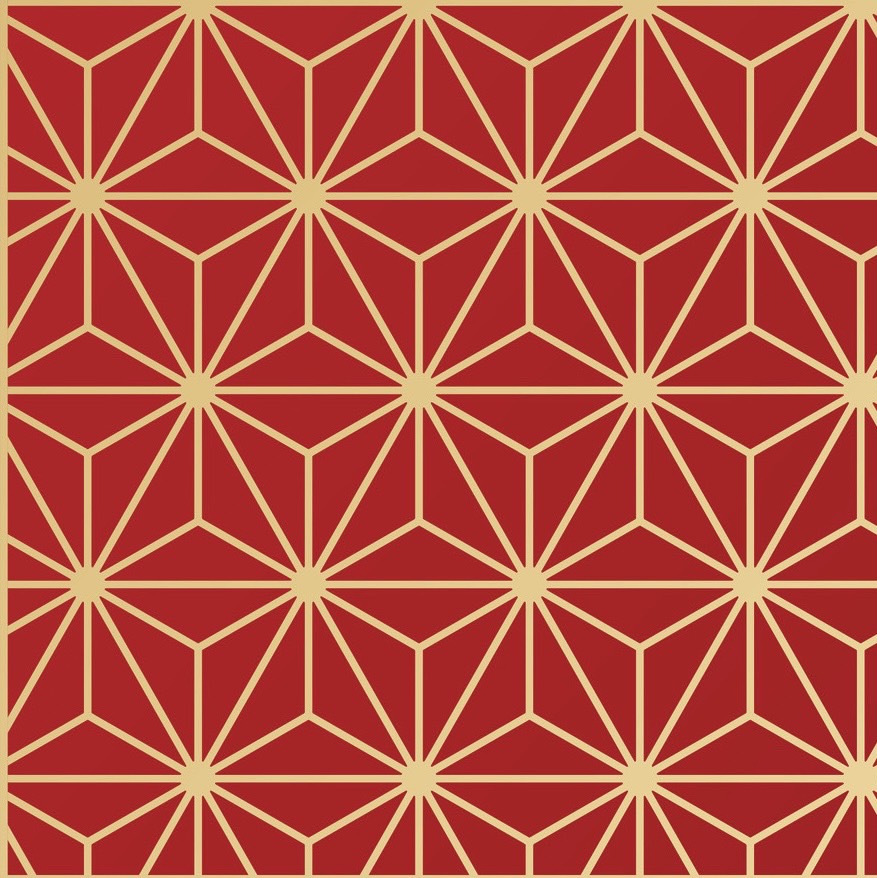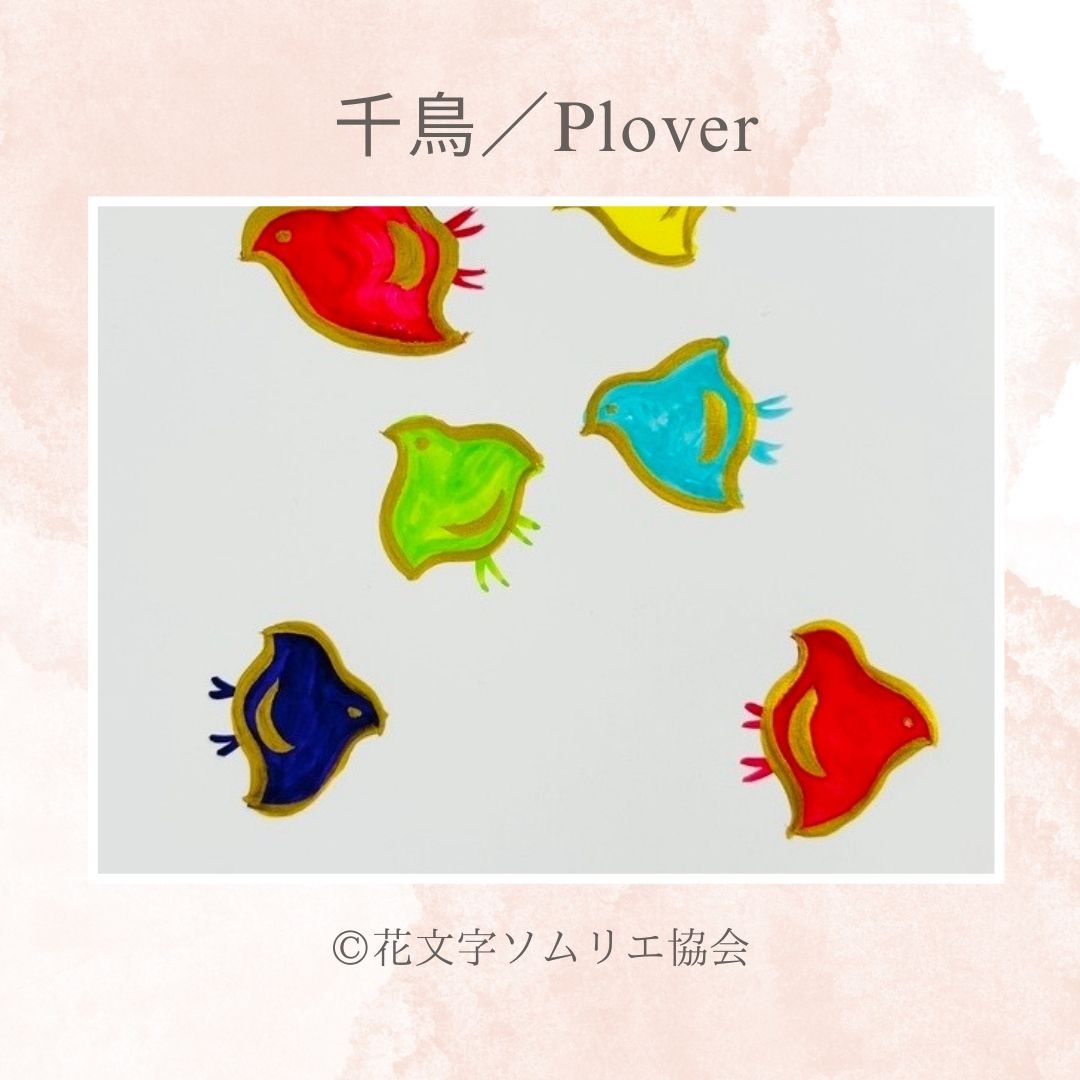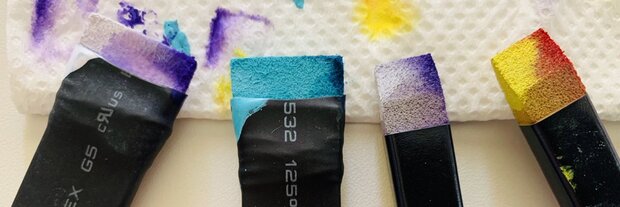The meaning of the pattern “Plover”
- Carrying Wealth
Examples of works using Plover

When drawing chidori (plovers), it’s helpful to practice both right-facing and left-facing directions so you can create a more balanced composition.
In some artworks, only a single bird may be drawn. However, it’s common to include two or three chidori together to give the impression of a flock flying in unison. Varying their sizes and colors can add a sense of movement and rhythm, resulting in a more dynamic and expressive piece.
When chidori are drawn flying over stylized waves, the pattern is known as namichidori (waves and plovers). Chidori also pair beautifully with the traditional seigaiha (blue ocean wave) pattern. This combination is often used to evoke a peaceful, harmonious atmosphere that reflects traditional Japanese aesthetics, while namichidori specifically symbolizes overcoming hardships and bringing good fortune.
Chidori Pattern: Realistic in the Heian Period, Pop-Style in the Edo Period
The chidori depicted in traditional Japanese patterns are small shorebirds—plovers—that can be seen flying in flocks near the sea or rivers. Their playful movement and group behavior have made them a beloved motif since ancient times.
These birds often appear in classic Japanese poetry collections such as the Manyoshu and Kokin Wakashu, showing how familiar and cherished they were by the Japanese people throughout history.
During the Heian period, chidori were portrayed quite realistically in artworks. One well-known example is the “Sawachidori Raden Makie no Kokarabitsu,” a decorative lacquered box featuring finely detailed and lifelike chidori, reflecting both the artistic skills and the popularity of this bird motif at the time.
Over the years, the representation of chidori gradually shifted from realism to more simplified and stylized forms. The birds became rounder, softer in shape, and more charming in their appearance.
By the Edo period, the chidori had taken on an even more playful form—almost triangular bodies with tiny feet—giving them a humorous and whimsical look. This transformation reflects the Edo-era spirit of creativity and lightheartedness, adding a fun and lively touch to traditional designs.
This evolution shows one of the fascinating aspects of Japanese patterns: even when using the same motif, the style and mood can vary greatly depending on the era. Some periods focused on realistic detail, while others embraced bold stylization. Through these changes, we get a glimpse into the sensibilities and everyday lives of the people of each era.
